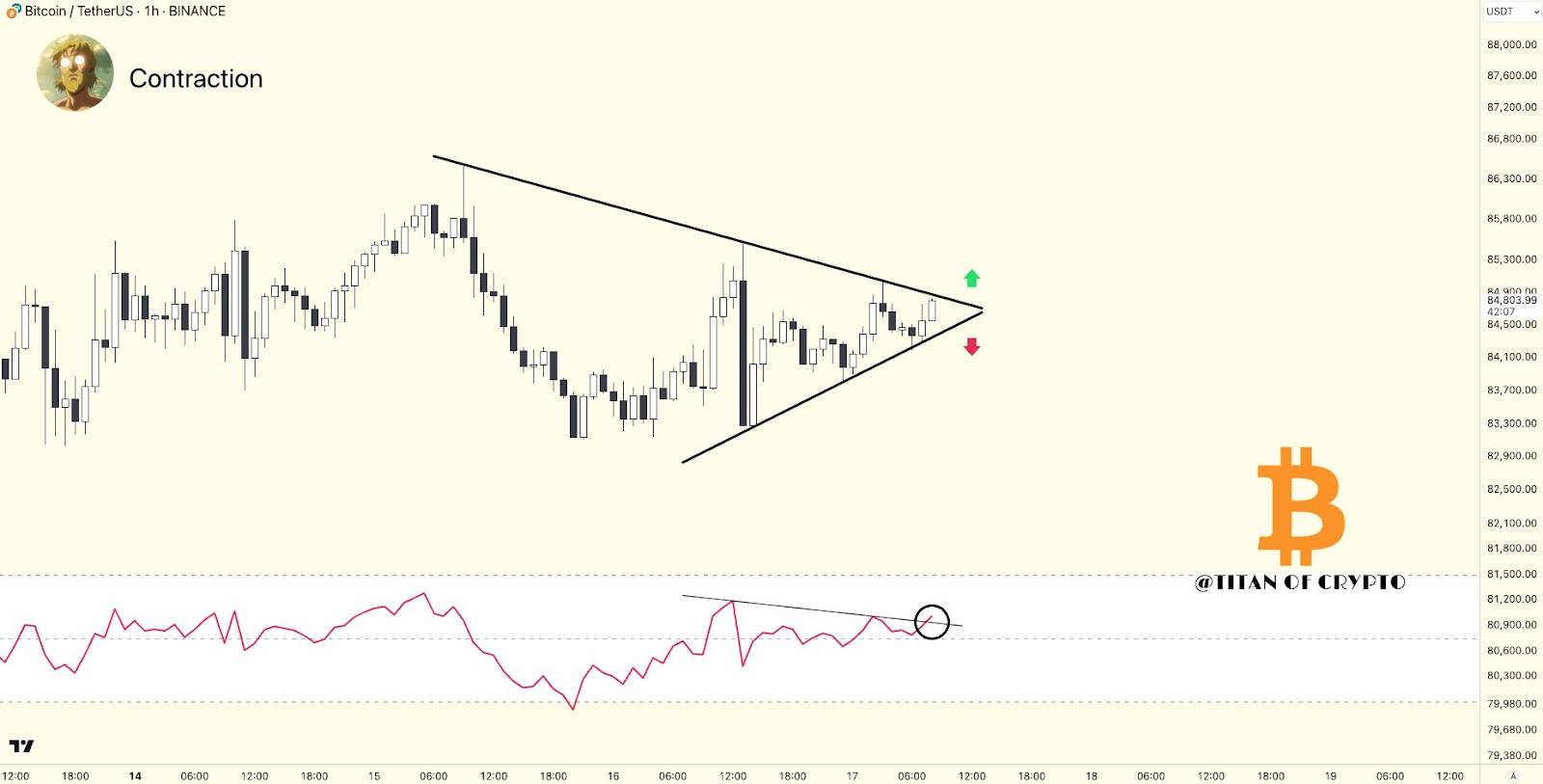Written by: Lawrence
In April 2025, Bitcoin's price continued to fluctuate in the range of $83,000 to $85,200, failing to break through the key resistance level of $86,000. This price volatility is closely related to subtle changes in macroeconomic data.

US unemployment benefits application data.
On April 17, the US Department of Labor reported initial unemployment claims of 215,000, lower than the market expectation of 225,000, indicating the continued resilience of the labor market. This data is viewed as an important signal of US economic stability, but it also lowered market expectations for Fed rate cuts, thereby suppressing short-term speculative sentiment in risk assets.
Federal Reserve Chairman Powell emphasized in his speech on April 16 that the recent "reciprocal tariffs" policy in the United States far exceeded expectations and could lead to the dual pressure of rising inflation and slowing economic growth.
Meanwhile, Trump said at a press conference: "I think he (Powell) is terrible, but I can't complain," and pointed out that the economy was strong during his first term. Trump continued to criticize Powell, saying he believed the Fed chairman was "playing politics" and stated that Powell was "someone I never really liked".
Trump then said: I think Powell will eventually cut rates, and the only thing Powell is good at is cutting rates.
Although the Federal Reserve clearly stated that it would not intervene in the market or implement rate cuts, the European Central Bank has taken the lead in lowering interest rates from 2.50% to 2.25%, reaching a new low since the end of 2022, in an attempt to mitigate the economic impact of tariff policies. This divergence in global monetary policies further intensifies market uncertainty, prompting investors to reassess the hedging attributes of assets like Bitcoin.

From a technical perspective, Bitcoin is at a critical "turning point". Anonymous trader Titan of Crypto pointed out that BTC price continues to contract within a triangular pattern, with the RSI indicator above 50 and trying to break through resistance, suggesting an imminent directional breakthrough. Order flow analyst Magus believes that if Bitcoin fails to break through $85,000 quickly, the long-term chart may turn bearish. The struggle in this price range not only concerns short-term trends but may also determine whether Bitcoin can continue its bull market pattern since 2024.
[The rest of the translation follows the same approach, maintaining the original structure and translating all text while preserving any HTML tags and specific terms like USDT, BTC, etc.]In this changing landscape, the complementarity between gold and BTC has become increasingly prominent. Gold, with its historical consensus and liquidity advantages, remains the ultimate safe-haven choice during crises; while BTC has validated its "Digital Gold 2.0" attribute through "decorrelation," becoming a core investment target for diversified portfolios.
For ordinary investors, configuring a portfolio of physical gold and mainstream cryptocurrencies, and paying attention to the "oversold opportunities" in emerging market bonds, may be the best strategy to withstand volatility.
History will not simply repeat itself, but it often rhymes. Whether it's BTC's turning point at $85,000 or gold's new high of $3,357, these numbers are microcosms of the global economic order's reconstruction. Only by maintaining rationality and foresight can one capture new opportunities amid uncertainty.







